Yanting Pei
Classification-driven Single Image Dehazing
Nov 21, 2019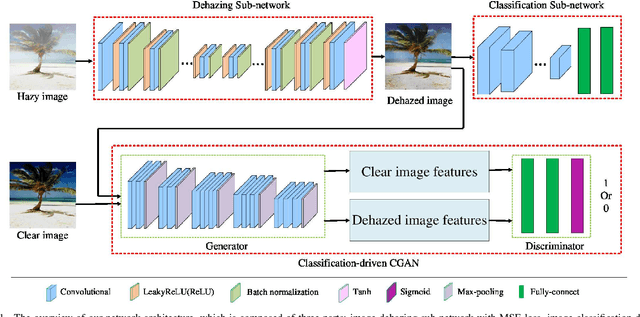
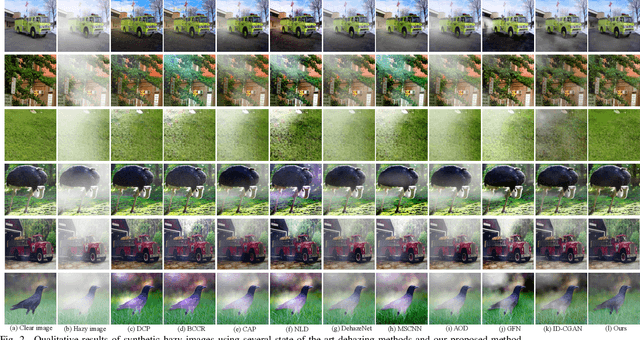
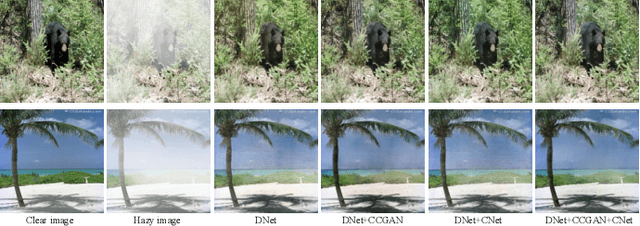

Abstract:Most existing dehazing algorithms often use hand-crafted features or Convolutional Neural Networks (CNN)-based methods to generate clear images using pixel-level Mean Square Error (MSE) loss. The generated images generally have better visual appeal, but not always have better performance for high-level vision tasks, e.g. image classification. In this paper, we investigate a new point of view in addressing this problem. Instead of focusing only on achieving good quantitative performance on pixel-based metrics such as Peak Signal to Noise Ratio (PSNR), we also ensure that the dehazed image itself does not degrade the performance of the high-level vision tasks such as image classification. To this end, we present an unified CNN architecture that includes three parts: a dehazing sub-network (DNet), a classification-driven Conditional Generative Adversarial Networks sub-network (CCGAN) and a classification sub-network (CNet) related to image classification, which has better performance both on visual appeal and image classification. We conduct comprehensive experiments on two challenging benchmark datasets for fine-grained and object classification: CUB-200-2011 and Caltech-256. Experimental results demonstrate that the proposed method outperforms many recent state-of-the-art single image dehazing methods in terms of image dehazing metrics and classification accuracy.
Does Haze Removal Help CNN-based Image Classification?
Oct 12, 2018



Abstract:Hazy images are common in real scenarios and many dehazing methods have been developed to automatically remove the haze from images. Typically, the goal of image dehazing is to produce clearer images from which human vision can better identify the object and structural details present in the images. When the ground-truth haze-free image is available for a hazy image, quantitative evaluation of image dehazing is usually based on objective metrics, such as Peak Signal-to-Noise Ratio (PSNR) and Structural Similarity (SSIM). However, in many applications, large-scale images are collected not for visual examination by human. Instead, they are used for many high-level vision tasks, such as automatic classification, recognition and categorization. One fundamental problem here is whether various dehazing methods can produce clearer images that can help improve the performance of the high-level tasks. In this paper, we empirically study this problem in the important task of image classification by using both synthetic and real hazy image datasets. From the experimental results, we find that the existing image-dehazing methods cannot improve much the image-classification performance and sometimes even reduce the image-classification performance.
Effects of Image Degradations to CNN-based Image Classification
Oct 12, 2018
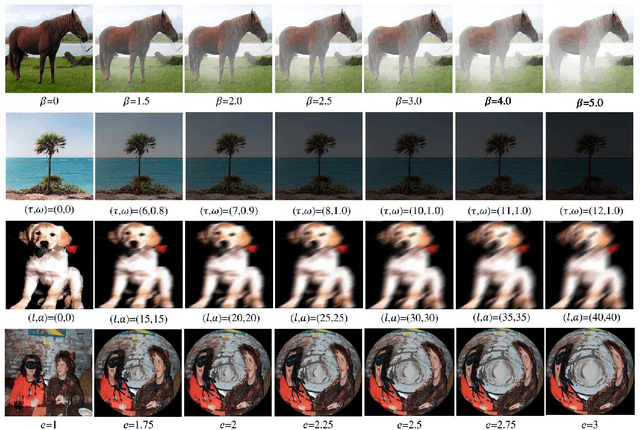
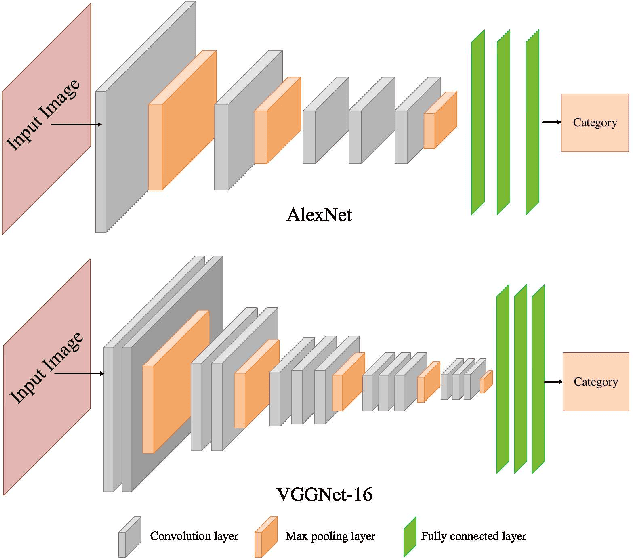
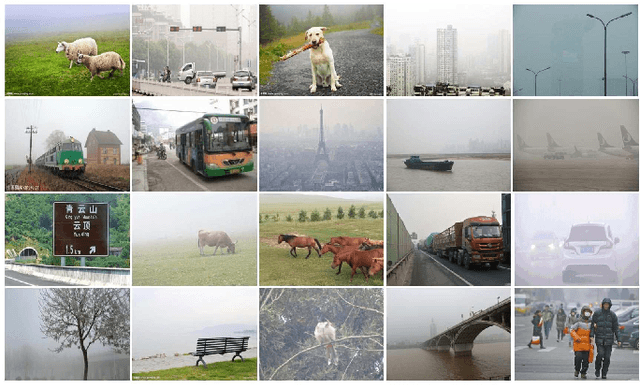
Abstract:Just like many other topics in computer vision, image classification has achieved significant progress recently by using deep-learning neural networks, especially the Convolutional Neural Networks (CNN). Most of the existing works are focused on classifying very clear natural images, evidenced by the widely used image databases such as Caltech-256, PASCAL VOCs and ImageNet. However, in many real applications, the acquired images may contain certain degradations that lead to various kinds of blurring, noise, and distortions. One important and interesting problem is the effect of such degradations to the performance of CNN-based image classification. More specifically, we wonder whether image-classification performance drops with each kind of degradation, whether this drop can be avoided by including degraded images into training, and whether existing computer vision algorithms that attempt to remove such degradations can help improve the image-classification performance. In this paper, we empirically study this problem for four kinds of degraded images -- hazy images, underwater images, motion-blurred images and fish-eye images. For this study, we synthesize a large number of such degraded images by applying respective physical models to the clear natural images and collect a new hazy image dataset from the Internet. We expect this work can draw more interests from the community to study the classification of degraded images.
 Add to Chrome
Add to Chrome Add to Firefox
Add to Firefox Add to Edge
Add to Edge